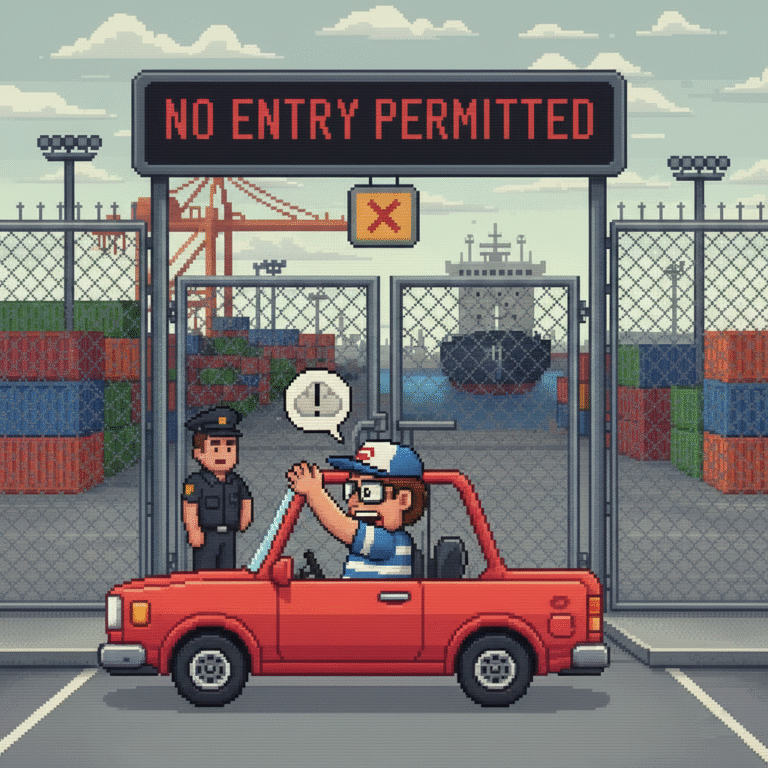
Docker Build “Permission Denied”? Here’s the Fix
If you’ve ever tried to build a Docker image and were met with the frustrating error:
bash
permission denied while trying to connect to the Docker daemon socket—or something like:
bash
EACCES: permission denied, mkdir '/app/node_modules'You’re not alone. Many developers run into this issue, especially when starting out with Docker or moving projects across different environments. Fortunately, the fix is usually straightforward once you understand what’s causing the problem.
In this post, we’ll break down the most common causes of the Docker “permission denied” error during build, and give you step-by-step solutions.
✅ What Causes the Docker Build “Permission Denied” Error?
Docker needs elevated permissions to perform certain operations like accessing the Docker daemon or writing to directories inside the container. Common reasons for permission issues include:
- Running Docker without
sudo - Incorrect ownership of files or folders
- File system restrictions (especially with mounted volumes)
- Trying to access restricted directories
- SELinux or AppArmor blocking file operations
Let’s fix these one by one.
🔧 Fix 1: Run Docker With Sudo (or Add User to Docker Group)
If you’re on Linux and get this:
bash
Got permission denied while trying to connect to the Docker daemon socketIt usually means your user doesn’t have permission to run Docker commands.
➤ Solution A: Use sudo
sudo docker build -t your-image-name .But typing sudo every time is annoying and can cause issues with some scripts or CI pipelines.
➤ Solution B: Add your user to the docker group
bash
sudo usermod -aG docker $USERThen log out and log back in (or restart your system).
You can verify with:
bash
docker run hello-worldIf it runs without sudo, you’re good to go.
🔧 Fix 2: File System Permissions (Especially with Node.js, Python, etc.)
Sometimes during build, you may see:
bash
EACCES: permission denied, mkdir '/app/node_modules'This typically happens when your Dockerfile is trying to write into a folder that has restrictive permissions.
➤ Solution: Set Correct Ownership or Permissions
In your Dockerfile, ensure you’re setting proper ownership:
Docker
# Example for Node.js
RUN mkdir -p /app && chown -R node:node /app
USER nodeOr for Python-based apps:
Docker
RUN mkdir -p /usr/src/app && chmod -R 755 /usr/src/appAlternatively, you can adjust permissions locally:
bash
sudo chown -R $USER:$USER your-project-folderAvoid using chmod 777 unless you’re in a hurry for a dev-only container—it’s a bad practice in production.
🔧 Fix 3: Docker Volumes and Bind Mounts
Mounting a host directory with incorrect permissions is a common cause of permission errors inside containers.
For example:
bash
docker run -v $(pwd):/app your-imageIf the /app directory expects to be written to, but your local folder is owned by root or has strict permissions, Docker will throw permission errors.
➤ Solution:
Make sure your local directory has the right ownership and permissions:
bash
sudo chown -R $USER:$USER .
chmod -R u+rw .
Also, avoid mounting sensitive directories unless absolutely needed.
🔧 Fix 4: SELinux or AppArmor Restrictions (Advanced)
On some Linux distros (especially Fedora or CentOS), SELinux might block Docker containers from writing to mounted volumes.
To verify if this is the issue, check system logs:
bash
dmesg | grep deniedOr try running with the :Z or :z mount option:
docker run -v $(pwd):/app:Z your-imageThis tells SELinux to relabel the volume appropriately.
🔧 Fix 5: Multi-Stage Builds and Missing User Context
If you’re using multi-stage Docker builds, remember that user permissions don’t carry over by default.
Example:
Docker
FROM node:18 as builder
WORKDIR /app
COPY . .
RUN npm install && npm run build
FROM nginx:alpine
COPY --from=builder /app/build /usr/share/nginx/htmlMake sure the final image has permission to read from the copied folders.
You can force ownership using:
Docker
COPY --chown=nginx:nginx --from=builder /app/build /usr/share/nginx/html✅ Best Practices to Avoid Permission Issues
- Use non-root users inside Docker whenever possible.
- Set folder permissions explicitly in your Dockerfile.
- Avoid
chmod 777— use precise permissions like755or700. - Mount volumes carefully and ensure your host system’s file ownership is compatible.
- Use linter tools like hadolint to catch Dockerfile issues early.
🚀 Conclusion
The “permission denied” error when building Docker images can be frustrating, but it’s usually caused by one of a few common issues: missing group access, wrong ownership, or restrictive file system settings. With the fixes above, you should be able to identify and resolve the problem quickly.
By following best practices—like using the Docker group, managing file permissions carefully, and avoiding overly permissive access—you can prevent these headaches in future projects.

